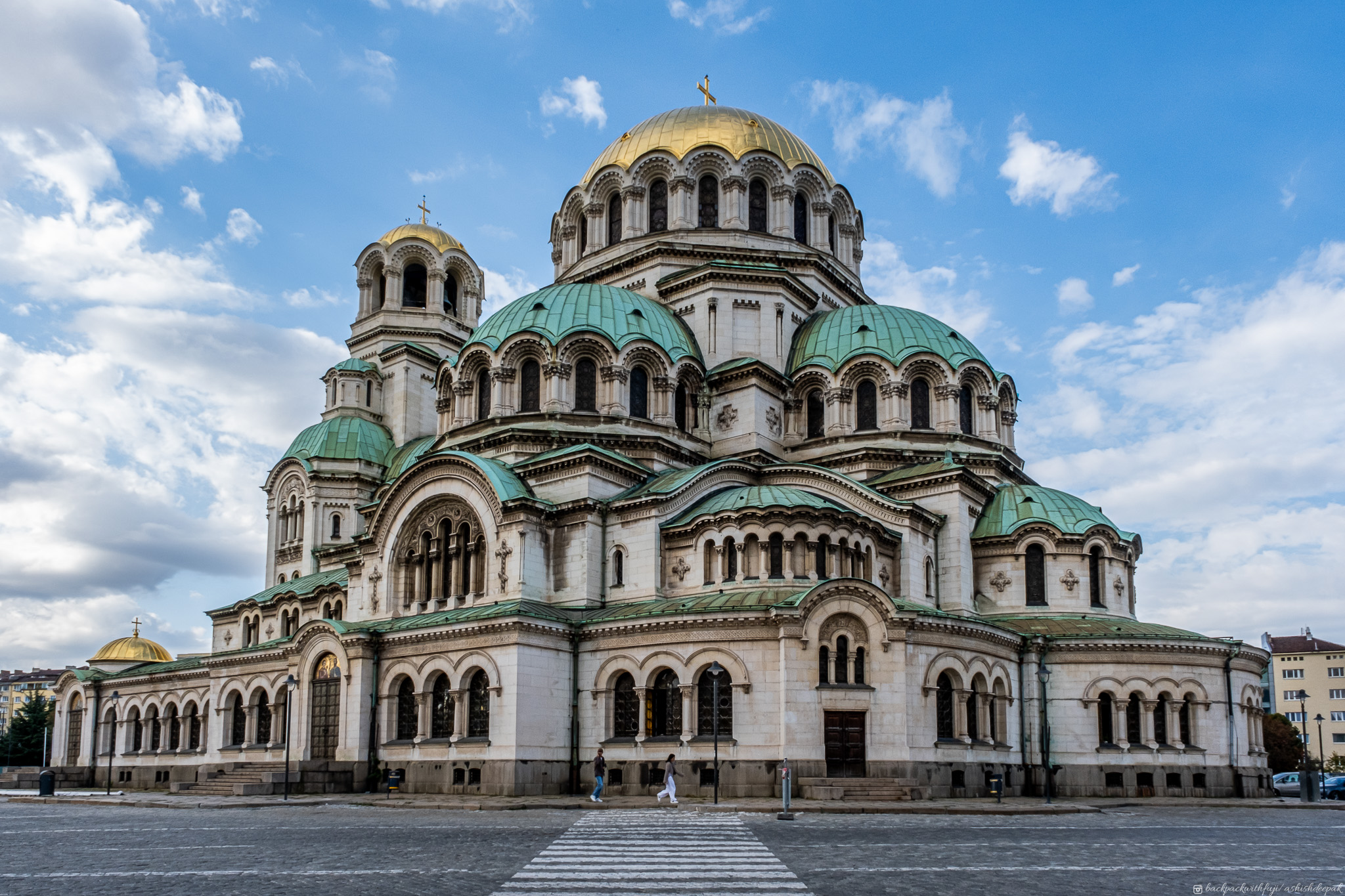The first day of my Balkan experience with my friend starts from the enigmatic Bulgarian capital, Sofia. We made our check-in into the hostel, an annexe building from HostelMostel Sofia. From the outside, the building looks like it has taken some bullet shells during the war. Once we had freshened up, we were ready to explore what the city had to offer.

Our first stop was the most iconic symbol in Sofia- Alexander Nevsky Cathedral. As you walk through the parks leading to the cathedral, you are treated to some street vendors selling handicrafts, interior decor, embroidered towels and even second-hand cameras and lenses.


We were hoping that the sun might shine through the clouds to light up the golden dome but nature had different plans. We decided to try our luck the next evening.
Our next plan was to book bus tickets to Skopje. Instead of taking public transport, we decided to walk around and explore the city. Once, we had the tickets for next evening to Skopje, it was already evening. As we walked a lot during the day, we decided to grab some authentic Bulgarian cuisine.
Hadjidraganov’s Houses
A must-visit restaurant in Sofia to try authentic Bulgarian food. It is located a few blocks away from the main bus station. The restaurant offers a unique dining experience offering traditional Bulgarian cuisine in a charming setting. This restaurant replicates an old Bulgarian village, with each dining area resembling a different part of a house. Guests enjoy authentic dishes while immersed in the rich cultural ambience of Bulgaria’s heritage. It’s a delightful spot for both food enthusiasts and those seeking an immersive cultural experience. Kebabs and meat platter is a must-try.



Day 2- Exploring more of Sofia
We set out early to explore Sofia on our last day in the city. We walked through the streets enjoying the calmness city had to offer and decided to have breakfast at a small cafe called The Rainbow Factory otherwise known as Fabrika Daga in Bulgarian. On the way, we came across an interesting location where people were rushing with a number of empty water bottles and some with cans to catch hot water produced from thermal springs.
These waters are rich in minerals and once were used for their medicinal properties. These springs are underground and unpolluted. The temperature of water could vary from 35°C to 90°C. We had to refill the water and try them as well. The water was so pure and you could even feel a sweetness because of the minerals. People catch the water from here for drinking, cooking and even for bathing.



We reached the small cafe overlooking the street and it was buzzing with locals and tourists alike. The cafe was started by 3 friends with a limited menu of sandwiches and soon expanded based on the wishes of guests. Now, the cafe provides a great brunch menu, some eye-catching desserts and a large selection of coffee. Be sure to check out this small cafe. There are 2 locations we chose, one close to Banya Bashi mosque. I had their traditional Panagurski Eggs and Mekitsi flatbread and my friend opted for Avocado toast.





After the break, we headed back to the city to explore more. Our first stop was the Regional History Museum. The tickets are around 6 Lev. An interesting fact is that the current museum building used to be the central bath until 1986 when it was closed and reconstructed to accommodate today’s museum. The museum contains history about Sofia and a few other attractions from Bulgarian King Ferdinand. A movie about the king is played as well in the museum. Among the most attractive exhibits are the carriage of the Bulgarian King Ferdinand.



After visiting the museum, we visited Sofia Synagogue- the largest Sephardic Synagogue in Europe. The architecture style of the synagogue is called Bulgarian National Romanticism. The altar is made up of white marble and has an octagonal dome.



As we reached closer to our time for the bus, we waked through the women’s market- shops exclusively run by women and crossed Ivan Vazov National Theatre and Serdica ruins and monument of Saint Sofia. The ruins are a lost roman city which was found under the modern city during the construction of the Serdica metro station. It is a unique attraction in the middle of the city.





Next, we head to the second Balkan capital of Skopje. It’s a 5hr ride including border checking. You can either book online or go directly to the bus operators at Central bus station. The main operator is Kaleia. Join me in exploring Skopje in my next blog.
Useful Links
Hostel Mostel – The most affordable and comfortable hostels in Sofia and Veliko Turnovo
Travelling by bus made easy – 197804 bus connections online (getbybus.com)
Sofia History Museum – Регионален исторически музей – София
Фабрика Дъга | Rainbow Factory (fabrikadaga.bg)
Welcome to Sofia – the capital of Bulgaria (visitsofia.bg)
Welcome to Sofia – the capital of Bulgaria (visitsofia.bg)
izzy’s Coffee & Brunch (@izzyscoffeebrunch) • Instagram photos and videos




